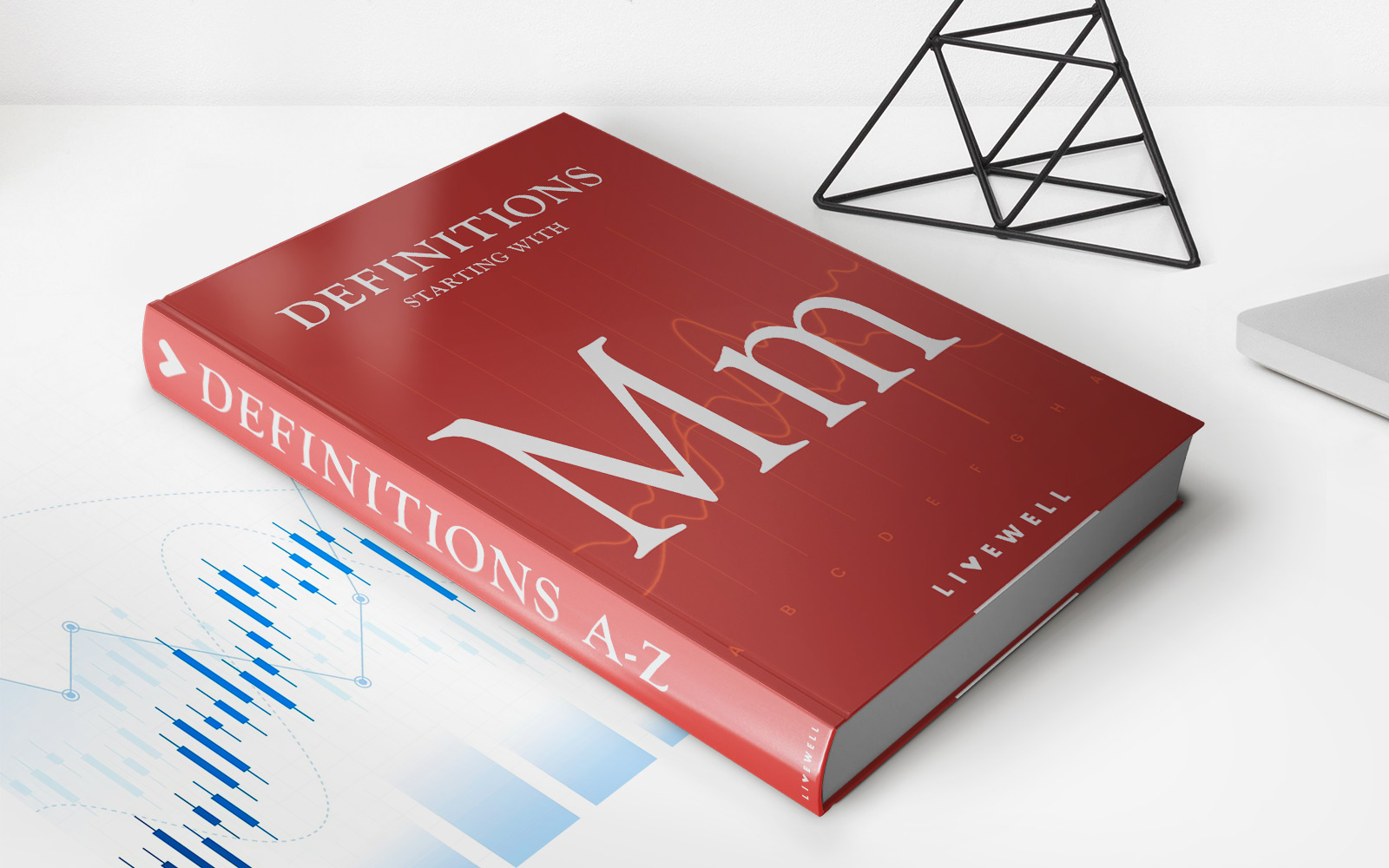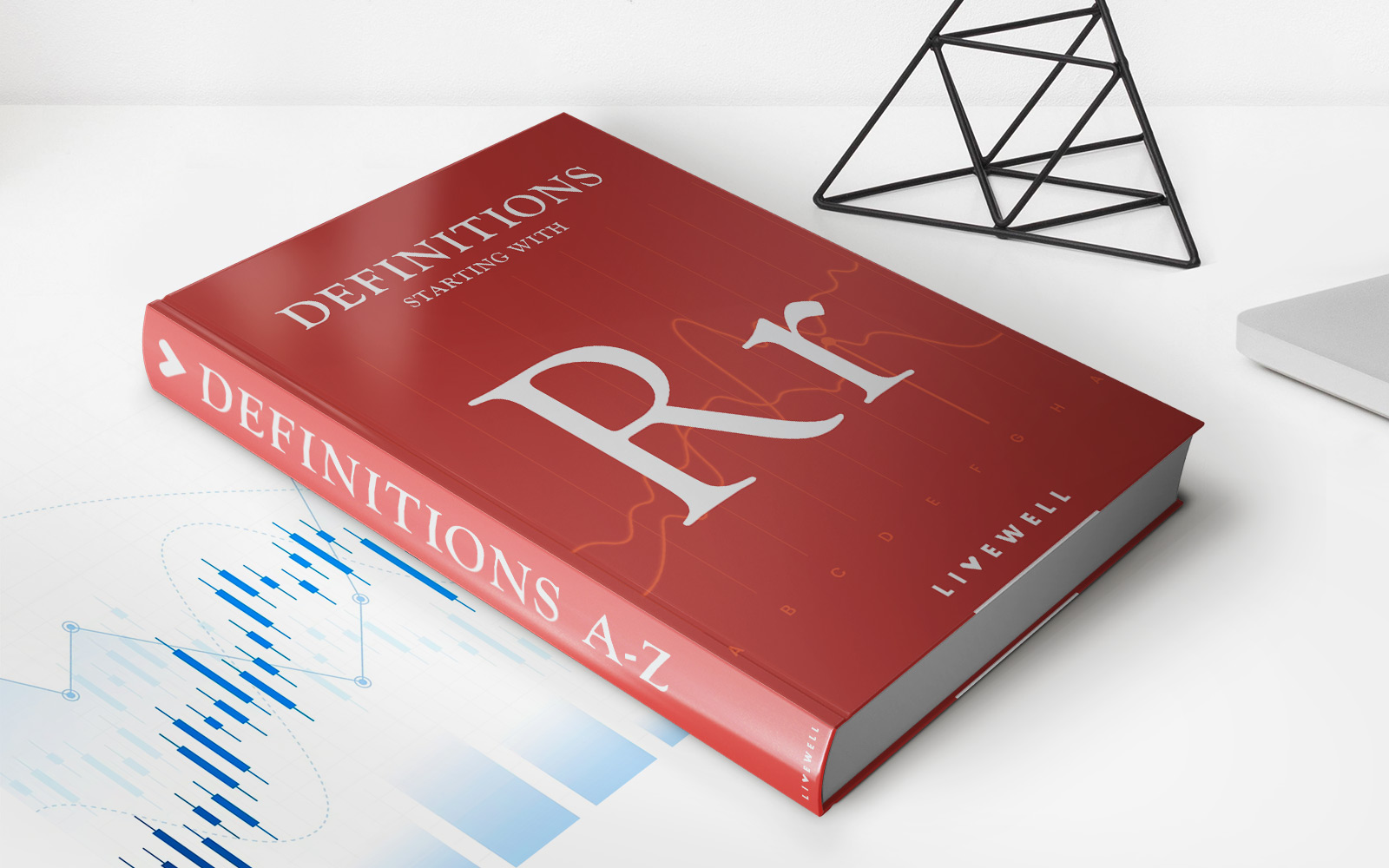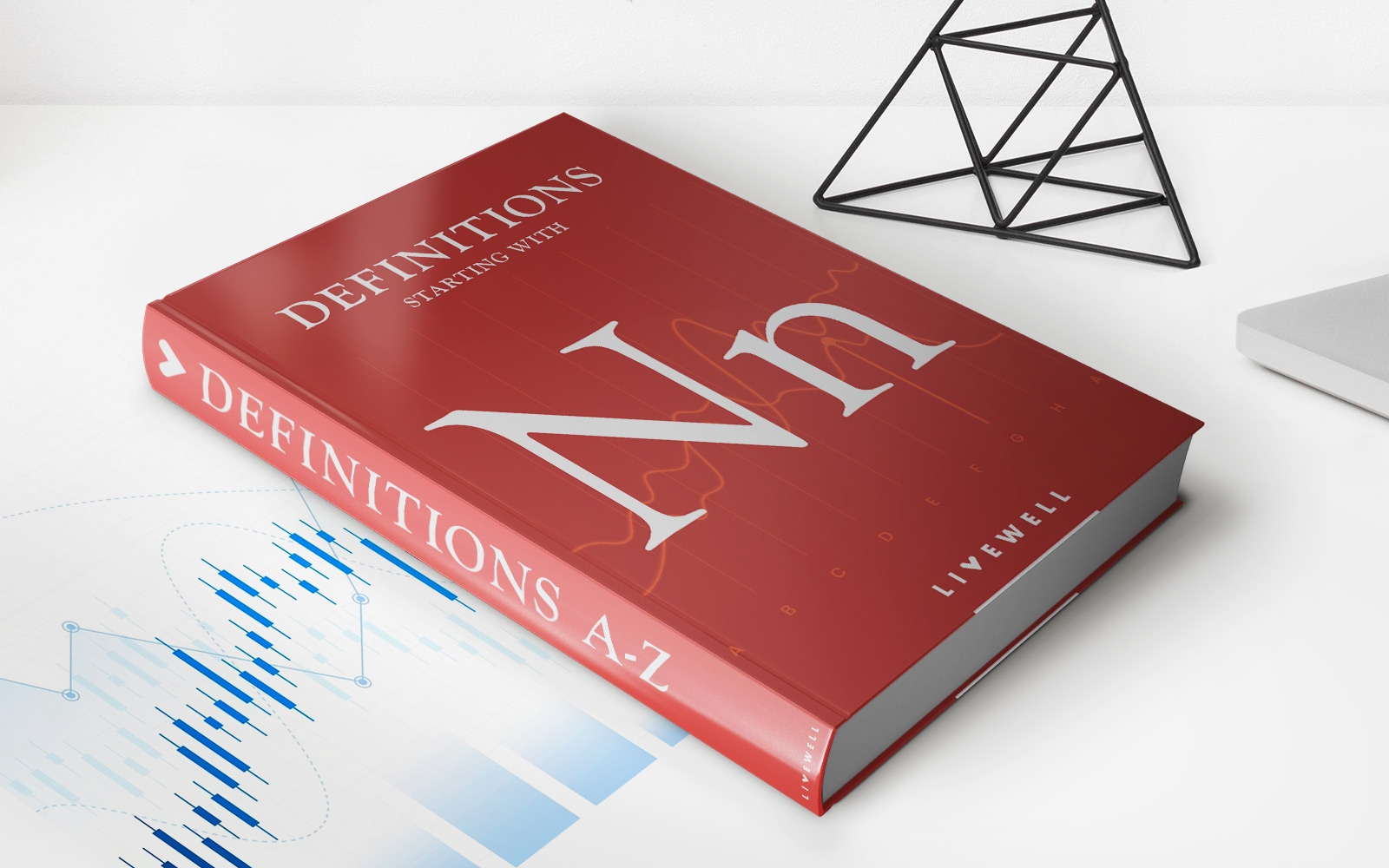

Finance
How Does Virginia Debt Relief Work
Published: December 21, 2023
Discover how Virginia debt relief programs work and find solutions to your financial challenges. Get expert guidance and support to manage your debt effectively.
(Many of the links in this article redirect to a specific reviewed product. Your purchase of these products through affiliate links helps to generate commission for LiveWell, at no extra cost. Learn more)
Table of Contents
- Introduction
- Understanding Debt Relief
- Types of Debt Relief in Virginia
- Debt Consolidation
- Debt Settlement
- Bankruptcy
- How Virginia Debt Relief Works
- Assessing Your Debt Situation
- Choosing a Debt Relief Option
- Working with a Debt Relief Company
- Negotiating with Creditors
- Paying Off Your Debt
- Monitoring Your Progress
- Benefits and Drawbacks of Virginia Debt Relief
- Conclusion
Introduction
Dealing with excessive debt can be overwhelming and stressful. It can hinder your financial stability, limit your ability to save, and impact your overall well-being. Fortunately, if you reside in Virginia and find yourself struggling with debt, there are options available to help you regain control of your finances.
Virginia debt relief programs are designed to assist individuals who are burdened with unmanageable debt. These programs offer support and guidance to help you eliminate or reduce your debts, find a repayment plan that suits your budget, and ultimately achieve financial freedom.
In this article, we will explore how debt relief works in Virginia and the different options available to you. Whether you’re considering debt consolidation, debt settlement, or bankruptcy, it’s important to understand the process and make informed decisions to improve your financial situation.
Keep in mind that while debt relief programs can be beneficial, they are not a quick fix and require commitment and diligence. It’s essential to choose the right approach for your unique circumstances and work with reputable professionals to navigate the complex landscape of debt relief.
Now, let’s delve into the various types of debt relief available in Virginia and how they can help you regain control over your finances.
Understanding Debt Relief
Debt relief is a general term that encompasses various strategies and programs aimed at helping individuals overcome their financial burdens. The goal is to reduce or eliminate your debts, negotiate more manageable payment terms, or create a structured repayment plan that aligns with your budget.
When you’re overwhelmed by debt, it’s important to understand the different options available to you and how they can potentially address your financial situation. Here are the main types of debt relief programs commonly used in Virginia:
- Debt Consolidation: This approach involves combining multiple debts into a single loan. By doing so, you can simplify your payments and potentially lower your interest rates. Debt consolidation can be done through a personal loan, balance transfer credit card, or a home equity loan.
- Debt Settlement: Debt settlement involves negotiating with your creditors to settle your debts for less than the total amount owed. This option is typically pursued when you’re unable to make your monthly payments and have fallen behind. Debt settlement programs work by making a lump sum payment or arranging a structured payment plan with your creditors.
- Bankruptcy: Bankruptcy is a legal process that allows individuals or businesses to eliminate or repay their debts under the protection of the court. It is considered a last resort and should only be considered when all other options have been exhausted. Bankruptcy can provide relief from overwhelming debt, but it has long-term consequences and should be carefully considered with the guidance of an attorney.
Each approach has its pros and cons, and the best course of action will depend on your specific financial circumstances. It’s crucial to assess your debt, understand your repayment capabilities, and consult with a qualified professional to determine which option is most suitable for you.
Now that we have a basic understanding of the different debt relief programs available, let’s explore how debt relief works in the context of Virginia and the steps involved in the process.
Types of Debt Relief in Virginia
When it comes to debt relief in Virginia, there are several options you can explore to help alleviate your financial burden. Here are the main types of debt relief programs available in the state:
- Debt Consolidation: Debt consolidation involves combining multiple debts into a single loan. This can be done through a personal loan, balance transfer credit card, or a home equity loan. By consolidating your debts, you can simplify your payments and potentially secure a lower interest rate. This allows you to focus on making a single monthly payment instead of juggling multiple ones.
- Debt Settlement: Debt settlement is a negotiation process where you work with a debt settlement company to reach a settlement agreement with your creditors. The company will negotiate with your creditors on your behalf to reduce the total amount of debt you owe. Once a settlement is reached, you make a lump sum payment or set up a structured payment plan to satisfy the reduced balance.
- Bankruptcy: Bankruptcy is a legal process that allows individuals or businesses to seek relief from overwhelming debts. In Virginia, the two common types of bankruptcy are Chapter 7 and Chapter 13. Chapter 7 bankruptcy involves the liquidation of non-exempt assets to repay creditors, while Chapter 13 bankruptcy involves creating a court-approved repayment plan to satisfy debts over a three to five-year period.
It’s worth noting that debt relief programs have their own eligibility criteria and potential consequences. Before choosing a specific program, it’s important to understand the implications it may have on your credit score, financial future, and tax liabilities.
Working with a reputable debt relief agency or consulting with a financial advisor can help you navigate the options available to you and make an informed decision based on your individual circumstances.
Now that we have explored the different types of debt relief programs in Virginia, let’s dive deeper into how the debt relief process works and the steps involved in regaining control over your finances.
Debt Consolidation
Debt consolidation is a popular approach for individuals in Virginia looking to simplify their debt repayment process and potentially lower their interest rates. It involves combining multiple debts into a single loan, making it easier to manage and reducing the number of monthly payments you need to keep track of.
There are different methods of debt consolidation available to residents of Virginia:
- Personal Loan: With a personal loan, you can borrow a lump sum of money from a financial institution and use it to pay off your existing debts. This leaves you with one loan to repay, simplifying your financial obligations. Personal loans typically come with fixed repayment terms and interest rates, helping you predict your monthly payments and potentially save money on interest.
- Balance Transfer Credit Card: A balance transfer credit card allows you to transfer your existing credit card balances onto a new card with a low or 0% introductory interest rate. By doing so, you can consolidate your credit card debt and potentially save on interest charges during the promotional period. It’s important to pay off the transferred balance before the promotional rate expires to avoid high interest charges.
- Home Equity Loan: If you own a home in Virginia, you may be able to use the equity you have built up as collateral for a loan. A home equity loan allows you to borrow against the value of your home and use the funds to pay off your debts. Since home equity loans are secured by your property, they generally offer lower interest rates compared to unsecured loans.
Debt consolidation can provide several benefits, including simplifying your repayment process, potentially reducing your overall interest costs, and helping you become debt-free faster. However, it’s important to consider the potential downsides as well. For example, if you choose a personal loan or home equity loan, you may be extending the repayment period, which could result in paying more in interest over time.
Prior to pursuing debt consolidation, it’s crucial to thoroughly assess your financial situation, including your income, expenses, and credit score. This will help you determine if debt consolidation is the right option for you and if you are eligible for favorable interest rates and terms.
Remember that debt consolidation is not a magic solution and requires discipline and commitment to stick to your repayment plan. It’s also important to avoid accruing additional debt while consolidating your existing debts, as this can lead to further financial strain. Seeking the guidance of a reputable financial advisor or debt consolidation agency can also help you make informed decisions and successfully navigate the debt consolidation process.
Now, let’s delve into another debt relief option available in Virginia: debt settlement.
Debt Settlement
Debt settlement is an option for individuals in Virginia who are struggling to make their monthly debt payments and want to negotiate a reduction in the total amount owed to their creditors. It involves working with a debt settlement company or negotiating with creditors directly to reach a settlement agreement.
Here’s how debt settlement typically works:
- Financial Assessment: When you opt for debt settlement, the first step is to assess your financial situation and determine your ability to make monthly payments towards your debts. This assessment will help you understand if debt settlement is a suitable option for you.
- Savings Account: Instead of making monthly payments to your creditors, you’ll contribute funds into a designated savings account specifically for the purpose of settling your debts.
- Negotiation Process: Once you have accumulated enough funds in your savings account, the debt settlement company or you can start negotiating with your creditors to reach a settlement agreement. The goal is to convince the creditors to accept a lump sum payment that is less than the total amount you owe.
- Settlement of Debts: If negotiations are successful, you’ll make a lump sum payment to the creditor, usually through the savings account. In exchange, the creditor will consider the debt settled, and you’ll no longer be obligated to pay the remaining amount.
- Rebuilding Credit: After settling your debts, it’s important to focus on rebuilding your credit. Debt settlement can have a negative impact on your credit score, but with responsible financial management, you can gradually improve your credit over time.
Debt settlement offers the potential advantage of reducing the total amount of debt you owe and providing a faster path to debt relief. However, it’s important to consider the potential drawbacks as well. Debt settlement can negatively impact your credit score, and not all creditors may be willing to negotiate a settlement. Additionally, there may be fees associated with working with a debt settlement company.
Before pursuing debt settlement, it’s essential to carefully research and select a reputable debt settlement company if you choose to work with one. Understand the fees involved, read reviews, and confirm that the company is licensed and accredited by reputable organizations such as the American Fair Credit Council (AFCC).
Alternatively, if you feel comfortable negotiating with your creditors directly, you can attempt to settle your debts on your own. Remember to be prepared, persistent, and professional during the negotiation process.
Now that we have covered debt settlement, let’s explore another debt relief option available in Virginia: bankruptcy.
Bankruptcy
Bankruptcy is a legal process that provides individuals and businesses in Virginia with a way to legally eliminate or repay their debts, offering them a fresh start financially. It is typically considered a last resort when all other debt relief options have been exhausted.
In Virginia, the two common types of bankruptcy are Chapter 7 and Chapter 13.
Chapter 7 Bankruptcy:
Chapter 7 bankruptcy, also known as liquidation bankruptcy, involves the liquidation of non-exempt assets to repay creditors. Non-exempt assets are items that are not protected by bankruptcy exemptions. In Virginia, there are specific exemptions that individuals can use to protect certain types of property, such as a homestead, vehicle, and personal belongings.
Once the non-exempt assets are liquidated, the proceeds are distributed among the creditors to satisfy the debt. However, it’s worth noting that not all debts can be discharged in Chapter 7 bankruptcy. Certain types of debt, such as child support, alimony, most tax debts, and student loans, are generally not dischargeable.
Chapter 13 Bankruptcy:
Chapter 13 bankruptcy, also known as reorganization bankruptcy, involves creating a court-approved repayment plan to repay debts over a period of three to five years. Unlike Chapter 7, Chapter 13 does not require liquidation of assets.
Under a Chapter 13 repayment plan, you make regular payments to a bankruptcy trustee who then distributes the funds to your creditors. The repayment plan is based on your income, expenses, and the amount of debt you owe. It provides an opportunity to catch up on missed mortgage or car loan payments, if necessary, and can help you keep your property while repaying your debts.
Both Chapter 7 and Chapter 13 bankruptcy have certain eligibility requirements, including income limitations and a means test, which determines if you have sufficient disposable income to repay some portion of your debts. It is crucial to consult with an experienced bankruptcy attorney to assess your eligibility and determine which type of bankruptcy is appropriate for your situation.
Bankruptcy should not be considered lightly, as it has long-term consequences. It can remain on your credit report for up to 10 years and may impact your ability to obtain credit in the future. However, for individuals with overwhelming debt and no other viable options, bankruptcy can provide a chance to rebuild their financial lives.
It’s important to remember that bankruptcy laws are complex, and the process can be overwhelming. Seeking the guidance of a knowledgeable bankruptcy attorney is highly recommended to ensure that your rights are protected and that you navigate the process correctly.
Now that we have covered the main types of debt relief available in Virginia, let’s move on to understanding how debt relief works in the state.
How Virginia Debt Relief Works
When it comes to debt relief in Virginia, the process typically involves several key steps to help individuals regain control of their finances and work towards becoming debt-free. Here is a general overview of how debt relief works in the state:
- Assessing Your Debt Situation: The first step in debt relief is to assess your overall debt situation. This involves gathering information about your outstanding debts, including the amount owed, interest rates, and payment terms. Understanding the full scope of your debt will help you determine which debt relief option is most suitable for your needs.
- Choosing a Debt Relief Option: Once you have assessed your debt, it’s important to explore the different debt relief options available in Virginia, such as debt consolidation, debt settlement, or bankruptcy. Consider the advantages, disadvantages, and eligibility criteria of each option to determine which one aligns with your financial goals and capabilities.
- Working with a Debt Relief Company: If you decide to pursue debt consolidation or debt settlement, you may choose to work with a reputable debt relief company. Research and select a company that has a proven track record, positive reviews, and transparent fee structures. A reputable debt relief company can provide guidance, negotiate with creditors on your behalf, and create a plan tailored to your financial situation.
- Negotiating with Creditors: If you choose to pursue debt settlement, whether on your own or with the assistance of a debt relief company, the negotiation process begins. The goal is to reach a settlement agreement with your creditors, aiming to reduce the total amount owed. This involves proving your financial hardship and demonstrating your inability to repay the debt in full.
- Paying Off Your Debt: Once a settlement agreement is reached, you will be required to make a lump-sum payment or set up a structured payment plan to satisfy the reduced balance. For debt consolidation, you’ll make regular payments towards the consolidated loan to gradually pay off the debt.
- Monitoring Your Progress: Throughout the debt relief process, it’s important to diligently monitor your progress. Keep track of your payments, ensure they are being applied correctly, and stay in communication with your debt relief company or creditors. Regularly reviewing your statements and credit reports can help you ensure that your debts are being addressed and that your financial situation is improving.
It’s important to note that the exact process and timeline for debt relief can vary depending on the specific approach you choose and your individual circumstances. Debt relief is not a one-size-fits-all solution, and what may work for one person may not be suitable for another.
Seeking the guidance of a qualified financial advisor, credit counselor, or debt relief professional can provide valuable insights and help you navigate the complexities of debt relief in Virginia. They can assist you in understanding your options, negotiating with creditors, and creating a plan to achieve your financial goals.
Now that we understand the general process of debt relief in Virginia, let’s examine the benefits and drawbacks associated with these debt relief programs.
Assessing Your Debt Situation
Before you can effectively pursue debt relief in Virginia, it is crucial to assess your overall debt situation. Taking the time to thoroughly evaluate your debts will provide you with a clear understanding of your financial obligations and help you determine the most appropriate debt relief option for your specific circumstances. Here are key steps to consider when assessing your debt situation:
- Compile Your Debts: Start by gathering all relevant information about your debts. This includes credit card balances, student loans, medical bills, personal loans, and any other outstanding debts. Take note of the amount owed, interest rates, monthly payments, and the status of each debt.
- Analyze Your Debt-to-Income Ratio: Calculate your debt-to-income ratio by dividing your total monthly debt payments by your monthly income. This ratio will help you understand the percentage of your income that goes towards servicing debt and determine if your debt load is manageable or if it is becoming too burdensome.
- Review Your Budget: Take a close look at your income and expenses to determine if there is any room for adjustments. Analyze your spending habits and identify areas where you can cut back to free up additional funds that can be allocated towards debt repayment.
- Evaluate Interest Rates: Assess the interest rates of your debts, as high rates can significantly contribute to your financial strain. Identify debts with the highest interest rates, as tackling these first can potentially save you money in the long run.
- Consider Your Financial Goals: Reflect on your short-term and long-term financial goals. Are you aiming to become debt-free as quickly as possible, or are you more focused on reducing monthly payments to alleviate immediate financial stress? Understanding your goals will help you determine which debt relief option aligns best with your objectives.
- Seek Professional Guidance: If you find it challenging to assess your debt situation or determine the best course of action, consider seeking guidance from a qualified financial advisor or a reputable credit counseling agency. These professionals can provide expertise, analyze your financial situation, and offer personalized advice to help you make informed decisions.
By thoroughly assessing your debt situation, you can gain a comprehensive understanding of your financial obligations, prioritize your debts, and make informed decisions about the most suitable debt relief option for your circumstances. Being proactive and taking control of your debt will set you on the path towards achieving financial stability and freedom.
Now that we have discussed assessing your debt situation, let’s explore the various debt relief options available in Virginia and how you can choose the right one for you.
Choosing a Debt Relief Option
When facing overwhelming debt in Virginia, choosing the right debt relief option is crucial in regaining control of your finances and working towards a debt-free future. While there are several debt relief options available, it’s important to select the one that aligns best with your financial goals and suits your unique circumstances. Here are some key factors to consider when choosing a debt relief option:
Evaluate Your Debts:
Consider the types of debts you have and their respective amounts. Different debt relief options may be more suitable for specific types of debts. For example, debt consolidation may be more effective for credit card debts, while debt settlement may work well for unsecured personal loans. Understanding your debts will help you narrow down the most appropriate debt relief solution.
Assess Your Financial Capability:
Take an honest look at your current financial situation, including your income, expenses, and ability to make monthly debt payments. Assess your cash flow to determine how much you can realistically allocate towards debt repayment. This will guide you in choosing a debt relief option that is affordable and sustainable.
Evaluate the Impact on Credit Score:
Understand that some debt relief options, such as debt settlement or bankruptcy, may have a negative impact on your credit score. If preserving your credit score is important to you, consider other options like debt consolidation, which may have a less significant impact on your credit.
Consider Long-term Consequences:
Examine the long-term consequences of each debt relief option. For example, bankruptcy can stay on your credit report for up to 10 years and may affect your ability to obtain credit in the future. Debt settlement may result in a partial write-off of your debts but can have an impact on your creditworthiness. Assess the potential consequences and weigh them against the benefits before making a decision.
Seek Professional Advice:
Consulting with a reputable debt relief professional, such as a financial advisor or credit counselor, can provide valuable insights and guidance. These professionals can analyze your specific situation, explain the pros and cons of each option, and help you make an informed decision based on your goals and financial capabilities.
Consider Legal and Ethical Considerations:
Ensure that the debt relief option you choose is legal and aligned with ethical standards. Be cautious of scams or fraudulent companies that may prey on vulnerable individuals. Research and choose reputable debt relief companies that have a track record of success and positive customer reviews.
By carefully considering these factors and seeking professional advice, you can choose the debt relief option that best suits your needs and aligns with your financial goals. It’s important to remember that every situation is unique, and what works for one individual may not work for another. Take the time to evaluate your options and make an informed decision that will set you on the path towards financial freedom.
Now that we have discussed choosing a debt relief option, let’s move on to understanding how to work with a debt relief company in Virginia.
Working with a Debt Relief Company
If you decide to seek assistance from a debt relief company in Virginia, it is important to choose a reputable and trustworthy firm. Working with a reputable debt relief company can provide you with expert guidance and support throughout the debt relief process. Here are some key considerations when working with a debt relief company:
Research and Select a Reputable Company:
Take the time to research and select a reputable debt relief company. Look for companies with a proven track record, positive customer testimonials, and proper licensing and accreditation. Verify their credentials and ensure they adhere to ethical practices, such as those outlined by the American Fair Credit Council (AFCC) or the Better Business Bureau (BBB).
Understand the Services Offered:
Review the services offered by the debt relief company and understand how they can assist you. Common services may include debt consolidation, debt settlement, or financial counseling. Choose a company that offers the specific debt relief options you are considering and that meets your individual needs.
Assessment of Your Financial Situation:
A reputable debt relief company will conduct a thorough assessment of your financial situation. They will evaluate your debts, income, and expenses to gain a comprehensive understanding of your financial standing. This assessment will help them develop a personalized strategy to address your debts effectively.
Clear Communication and Transparency:
Ensure that the debt relief company maintains clear communication with you throughout the process. They should provide detailed information about fees, timelines, and the potential impact on your credit. They should also be transparent about their negotiation tactics, keeping you informed every step of the way.
Negotiation with Creditors:
If you are pursuing debt settlement, the debt relief company will negotiate with your creditors on your behalf. They will work to reach a settlement agreement that reduces the total amount you owe. It is crucial that the company has experienced negotiators who can effectively communicate with your creditors to achieve the best possible outcome for you.
Review the Contract:
Before signing any agreements or contracts, carefully review the terms and conditions. Ensure that you understand your obligations, the fees involved, and any potential risks. If there are any questions or concerns, don’t hesitate to ask for clarification before proceeding.
Regular Progress Updates:
A reputable debt relief company will provide regular updates on the progress of your debt relief program. They should keep you informed about any settlements reached, payments made, or changes in your plan. It’s important to stay informed and involved throughout the process to ensure everything is on track.
Remember, while working with a debt relief company can be beneficial, it is essential to stay engaged and proactive in the process. Stay organized, review your statements and progress reports, and maintain open communication with your debt relief company.
Now that you understand how to work with a debt relief company, let’s move on to the next step in the debt relief process: negotiating with creditors.
Negotiating with Creditors
When pursuing debt relief in Virginia, the process often involves negotiating with your creditors. Negotiating with creditors is a crucial step in achieving a favorable outcome and reducing your debt burden. Here are some key points to consider when negotiating with creditors:
Understand Your Financial Situation:
Before approaching your creditors, it is important to have a clear understanding of your financial situation. Be prepared to provide accurate information about your income, expenses, and current debt obligations. By having a complete picture of your finances, you can effectively communicate your circumstances to your creditors.
Communicate Proactively:
Keep open lines of communication with your creditors. If you are experiencing financial difficulties that make it difficult to make your payments, reach out to them as soon as possible. Ignoring the problem will only worsen the situation. Explain your financial challenges honestly and provide documentation if necessary.
Propose a Debt Repayment Plan:
Work with your creditors to propose a realistic debt repayment plan. This may involve requesting reduced interest rates, extended payment terms, or lower monthly payments. Present a detailed plan outlining how much you can comfortably afford to pay and how long it will take to clear your debts. Showing your commitment to repay the debt can help facilitate a constructive negotiation process.
Be Prepared for the Possibility of a Settlement:
In some cases, your creditors may be open to accepting a settlement amount that is less than the total balance owed. If you are pursuing a debt settlement, it is important to have a lump sum or a structured payment plan ready to offer to your creditors. Remember, creditors are not obligated to accept a settlement, but they may be more willing to negotiate if they see that it is the best option for them to recover some of the owed funds.
Get Agreements in Writing:
Once you have reached an agreement with your creditors, ensure that all terms and conditions are clearly documented in writing. This includes the reduced settlement amount, modified payment terms, or any other negotiated changes. Review the agreement carefully and confirm that it accurately reflects the terms you agreed upon before signing or making any payments.
Keep Records:
Throughout the negotiation process, it is essential to keep detailed records of all communications with your creditors. This includes documents, emails, and notes of phone conversations. Having a paper trail will help protect your rights and interests, especially if any disputes arise in the future.
Work with a Reputable Debt Relief Company (if applicable):
If you are working with a debt relief company, they will handle the negotiation process on your behalf. Ensure that the company has experienced negotiators who can effectively communicate with your creditors and work towards achieving a fair and favorable resolution.
Remember, negotiating with creditors may not always result in a positive outcome. Some creditors may be unwilling to negotiate or accept reduced payments. In such cases, exploring other debt relief options, such as debt consolidation or bankruptcy, may be necessary. It is crucial to assess your individual circumstances and seek professional guidance to determine the most suitable approach for achieving debt relief and improving your financial situation.
Paying Off Your Debt
Once you have established a debt relief plan and negotiated with your creditors, the next step in the process is to start paying off your debt. Paying off your debt requires discipline, commitment, and a solid repayment strategy. Here are some important considerations to keep in mind when paying off your debt:
Create a Budget:
Develop a comprehensive budget that outlines your monthly income and expenses. This will help you allocate a specific amount towards debt repayment each month. Identify areas where you can cut back on expenses to free up more money to put towards paying off your debt.
Stick to the Repayment Plan:
Follow the repayment plan outlined in your debt relief strategy. Make your payments on time and in the agreed-upon amounts. Consistency is crucial for making progress towards becoming debt-free.
Consider the Snowball or Avalanche Method:
There are two popular debt repayment methods you can consider: the snowball method and the avalanche method. The snowball method involves paying off your smallest debts first, then using the freed-up funds to tackle larger debts. The avalanche method prioritizes paying off debts with the highest interest rates first to save money on interest over time. Choose the method that aligns with your goals and preferences.
Automate Payments:
To avoid missing payments, consider setting up automatic payments for your debts. This ensures that your payments are made on time and helps you stay organized and disciplined in your debt repayment efforts.
Track Your Progress:
Monitor your progress as you pay off your debts. Keep track of the balances, interest rates, and the amount of debt paid off. Celebrate each milestone along the way to stay motivated and focused on your goal of becoming debt-free.
Minimize New Debt:
Avoid taking on new debt while you’re in the process of paying off your existing debts. Focus on changing spending habits and prioritizing needs over wants. By reducing new debt, you can accelerate your progress towards financial freedom.
Seek Support and Accountability:
Consider sharing your debt repayment journey with a trusted friend or family member who can provide encouragement and support. Joining online debt repayment communities can also offer motivation, tips, and strategies from others going through a similar experience.
Stay in Close Communication with Your Debt Relief Company (if applicable):
If you are enrolled in a debt relief program, maintain regular communication with your debt relief company. They can ensure that your payments are being properly allocated and provide guidance if any issues arise during the repayment process.
Remember, paying off your debt takes time and patience. Stay focused on your goals, maintain consistent payments, and celebrate your progress along the way. Becoming debt-free is achievable with dedication, perseverance, and a solid repayment plan in place.
Monitoring Your Progress
Monitoring your progress is a critical component of the debt relief process. It involves regularly assessing your financial situation, tracking your debt repayment efforts, and making any necessary adjustments to stay on track towards becoming debt-free. Here are some key steps to effectively monitor your progress:
Regularly Review Your Budget:
Continue to evaluate your budget to ensure it aligns with your financial goals. Review your income, expenses, and debt repayment plan to determine if any adjustments or optimizations are needed. As your financial situation evolves, your budget may require modifications to reflect changes in income, expenses, or debt obligations.
Track Your Debt Repayment:
Monitor your debt repayment progress by keeping track of your outstanding balances and the progress you’ve made in paying off your debts. Use a spreadsheet, a debt repayment app, or any other tools that can help you visualize your progress and staying motivated along the way.
Review Credit Reports:
Regularly obtain and review your credit reports to ensure that your debts are being accurately reported. Monitoring your credit reports can also help you identify any errors or discrepancies that should be addressed. By staying informed about your credit standing, you can take proactive steps to improve and protect your credit score.
Check Statements and Correspondence:
Thoroughly review your monthly statements, including those from your creditors or debt relief company, to ensure accuracy and to verify that all payments and settlements are properly documented. Keep an eye out for any irregularities and promptly address any issues that arise.
Stay Connected with Your Debt Relief Company (if applicable):
Maintain regular communication with your debt relief company, if you are working with one. Provide updates on your financial situation, notify them of any changes in circumstances, and promptly address any questions or concerns that arise. Staying connected with your debt relief company can help ensure that they have the most up-to-date information and can provide continued support throughout your journey to debt freedom.
Celebrate Milestones:
Take time to celebrate achievements and milestones along the way. As you pay off each debt or reach significant progress milestones, reward yourself for your hard work and dedication. Celebrating these achievements can serve as a motivator to keep you focused and encouraged as you continue on your debt relief journey.
Reassess and Adjust as Needed:
Regularly reassess your overall financial situation, your goals, and your progress. If circumstances change, such as a change in income or unexpected expenses, be willing to adjust your budget and repayment plan accordingly. Flexibility and adaptability are key to effectively navigate the debt relief journey.
By actively monitoring your progress, you can ensure that you are staying on track towards your goal of becoming debt-free. It allows you to make informed decisions, identify any challenges early on, and make necessary adjustments to your financial plan. Remember, becoming debt-free is a journey, and consistent monitoring will help you stay focused and motivated along the way.
Benefits and Drawbacks of Virginia Debt Relief
Virginia debt relief programs can be powerful tools for individuals struggling with overwhelming debt, offering a path towards financial freedom. However, it’s important to carefully consider the benefits and drawbacks before choosing a debt relief option. Here are some key points to consider:
Benefits of Virginia Debt Relief:
- Reduced Debt Burden: Debt relief programs can significantly reduce your overall debt burden. Through strategies like debt consolidation, debt settlement, or bankruptcy, you may be able to negotiate lower interest rates, reduced balances, or eliminate certain types of debt.
- Manageable Payments: Debt relief allows you to consolidate multiple debts into a single monthly payment, making it more manageable and reducing the risk of missed payments and late fees. This can provide peace of mind and help you regain control over your finances.
- Financial Stress Relief: By finding a viable debt relief option in Virginia, you can alleviate the stress and anxiety that comes with overwhelming debt. The reduction of your debt burden can provide a sense of relief and improve your overall well-being.
- Debt Repayment Strategies: Debt relief programs often provide structured repayment strategies that help you stay organized and focused on paying off your debts. With a clear plan in place, you can make consistent progress towards becoming debt-free.
- Opportunity for Financial Fresh Start: Debt relief offers the opportunity for a fresh start and a chance to rebuild your financial life. By addressing your debts head-on, you can work towards a better financial future and develop healthy financial habits.
Drawbacks of Virginia Debt Relief:
- Impact on Credit Score: Debt relief options, such as debt settlement or bankruptcy, can have a negative impact on your credit score. It may take time to rebuild your creditworthiness after completing a debt relief program. It’s essential to consider the long-term consequences and potential limitations this may have on future financial endeavors.
- Possible Fees and Costs: Some debt relief programs may involve fees or costs. While these fees are designed to help you navigate the process and achieve debt relief effectively, it’s important to understand the associated costs and ensure they are reasonable and transparent.
- Potential for Legal Proceedings: In certain debt relief programs, such as bankruptcy, there may be legal proceedings involved. It’s essential to understand the legal implications, including court appearances and requirements, when pursuing debt relief through the legal system.
- Eligibility Criteria: Each debt relief option in Virginia has specific eligibility criteria. It’s important to assess whether you meet the requirements before proceeding. For example, certain debt relief programs may require a minimum level of debt, a specific income level, or eligibility based on the types of debts you owe.
- Not a Quick Fix: Debt relief programs are not instant solutions to debt problems. They require time, commitment, and financial discipline to achieve successful outcomes. It’s essential to be patient and understand that progress may take time.
Understanding the benefits and drawbacks of Virginia debt relief programs will help you make informed decisions that align with your financial goals. It is always recommended to seek professional advice or consult with a reputable debt relief company to fully understand the implications and suitability of each option based on your unique situation.
Conclusion
Dealing with overwhelming debt can be a challenging and stressful experience. However, residents of Virginia have access to various debt relief options that can help pave the way towards financial freedom. Whether you choose debt consolidation, debt settlement, or bankruptcy, it is essential to assess your debt situation, understand the benefits and drawbacks of each option, and select the path that aligns with your financial goals and capabilities.
Virginia debt relief programs offer numerous benefits, including reduced debt burden, manageable payments, and the opportunity for a fresh financial start. These programs can provide relief from financial stress and help you regain control over your finances. Choosing the right debt relief option allows you to develop a structured repayment plan, negotiate with creditors, and work towards becoming debt-free.
However, it is important to consider the potential drawbacks, such as the impact on credit scores, associated fees, and the need to meet specific eligibility criteria. These factors should be carefully evaluated to make an informed decision about the most suitable debt relief option for your circumstances.
Throughout the debt relief process, monitoring your progress is essential. Regularly reviewing your budget, tracking your debt repayment, and staying in communication with your debt relief company (if applicable) will help you stay on track towards your financial goals.
Remember, debt relief is not a quick fix. It requires commitment, discipline, and patience. It is a journey towards financial stability and freedom that may include sacrifices and adjustments to your lifestyle. Seeking guidance from reputable professionals and staying proactive in managing your debt will greatly increase your chances of success.
Overall, Virginia debt relief programs provide individuals with the opportunity to tackle their debts, overcome financial challenges, and build a stronger financial future. By taking the necessary steps to assess your debt, choose the right option, and diligently work towards paying off your debts, you can achieve the peace of mind and financial stability you deserve.














